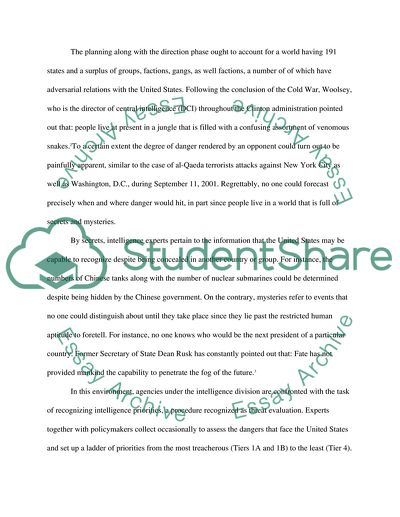Cite this document
(“Challenges in the Intelligence Cycle from Collection to Dissemination Research Paper”, n.d.)
Challenges in the Intelligence Cycle from Collection to Dissemination Research Paper. Retrieved from https://studentshare.org/politics/1725093-challanges-in-the-intelligence-cycle-from-collection-to-dissemination-within-the-us-intelligence-community
Challenges in the Intelligence Cycle from Collection to Dissemination Research Paper. Retrieved from https://studentshare.org/politics/1725093-challanges-in-the-intelligence-cycle-from-collection-to-dissemination-within-the-us-intelligence-community
(Challenges in the Intelligence Cycle from Collection to Dissemination Research Paper)
Challenges in the Intelligence Cycle from Collection to Dissemination Research Paper. https://studentshare.org/politics/1725093-challanges-in-the-intelligence-cycle-from-collection-to-dissemination-within-the-us-intelligence-community.
Challenges in the Intelligence Cycle from Collection to Dissemination Research Paper. https://studentshare.org/politics/1725093-challanges-in-the-intelligence-cycle-from-collection-to-dissemination-within-the-us-intelligence-community.
“Challenges in the Intelligence Cycle from Collection to Dissemination Research Paper”, n.d. https://studentshare.org/politics/1725093-challanges-in-the-intelligence-cycle-from-collection-to-dissemination-within-the-us-intelligence-community.


